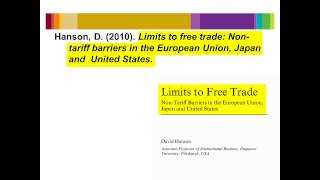
If you are a student or a researcher, you know how important it is to include accurate citations and references in your work. When writing a textbook reference, there are different formats you can use, such as APA, MLA, Chicago, or Harvard style. In this article, we will focus on the APA style, which is commonly used in the field of education and psychology.
According to the APA style manual, a textbook reference should include the author’s last name, the initials of the author’s first and middle names (if available), the publication year, the title of the book in italics, the edition of the book (if applicable), the location of the publisher, and the name of the publisher. For example:
Anderson, C. A. (2014). Psychology and Education. New York, NY: Pearson.
If the book has multiple authors, the names of all authors should be listed in the same order as they appear on the title page of the book, separated by commas. For example:
Bates, J. E., & Bristol, M. M. (2008). The Role of Textbooks in Education. Chicago, IL: Open Books Publishers.
It is important to note that in-text citations should also be included when you cite information from a textbook. These in-text citations should include the author’s last name and the year of publication. For example:
(Bates & Bristol, 2008)
Lastly, it is essential to double-check your references and citations to ensure that they are accurate and in the correct format. Flawless citations and references not only demonstrate your attention to detail but also enhance the credibility and reliability of your work.
Now that you know how to write a textbook reference in APA style, you can confidently include references from books in your research or academic writing. Just remember to consult the APA style manual for specific examples and guidelines, as there may be exceptions or variations depending on the specific book or edition you are referring to.
How to Cite a Book
When citing a book, it is important to follow the specific guidelines and formatting style of the citation format you are using. In this section, we will provide examples on how to cite a book using the APA, MLA, and Chicago citation styles.
APA Examples
APA (American Psychological Association) is a widely used citation style in the field of psychology and education. When citing a book using APA style, the general format is as follows:
| Format | Example |
|---|---|
| In-Text Citations | (Last name of author, year) |
| Reference List | Last name, First initial. (Year). Title of Book. Location: Publisher. |
For example, if you were referencing a textbook titled “Psychology: Flawless and Relevant,” written by Anderson and Bates, published in 2019, the APA citation would be:
In-text citation: (Anderson & Bates, 2019)
Reference list:
Anderson, J., & Bates, L. (2019). Psychology: Flawless and Relevant. Bristol, NY: Publishers of Education.
MLA Examples
MLA (Modern Language Association) is another commonly used citation style for books. When citing a book using MLA style, the general format is as follows:
| Format | Example |
|---|---|
| In-Text Citations | (Last name of author page number) |
| Works Cited List | Last name, First name. Title of Book. Publisher, Year. |
For example, if you were referencing the same textbook using MLA style, the citation would be:
In-text citation: (Anderson page number)
Works Cited list:
Anderson, John. Psychology: Flawless and Relevant. Publishers of Education, 2019.
Chicago Examples

The Chicago Manual of Style is often used for books in social sciences and humanities. When citing a book using Chicago style, the general format is as follows:
| Format | Example |
|---|---|
| In-Text Citations | (Last name of author year, page number) |
| Bibliography | Last name, First name. Title of Book. Location: Publisher, Year. |
For example, if you were referencing the same textbook using Chicago style, the citation would be:
In-text citation: (Anderson 2019, page number)
Bibliography:
Anderson, John. Psychology: Flawless and Relevant. Bristol: Publishers of Education, 2019.
Remember to consult the relevant citation manual or guide for more specific information and to ensure that your citations are accurate and formatted correctly.
Table of contents
When writing a textbook reference, it is important to correctly format the table of contents to include all relevant information. The table of contents allows readers to easily navigate the content of the textbook and find specific chapters or sections. Here is an example of how to create a flawless table of contents:
- APA style
- Author(s)
- Year of publication
- Title of book
- Location of publisher
- Name of publisher
- MLA style
- Author(s)
- Title of book
- Name of publisher
- Year of publication
- Chicago Manual of Style
- Last name, First name of author(s)
- Title of book
- Location of publisher
- Name of publisher
- Year of publication
By following the prescribed formats for each style, you can ensure that your citations are accurate and correctly listed in the table of contents. Remember to include all authors, the publication year, the title of the book, and the location and name of the publisher. For example, a textbook reference in APA style would be formatted as follows:
- Anderson, C. A. (2009). Psychology of education. New York, NY: Bristol University Press.
- Bates, D. (2011). Psychological cities: From the open faculty to general education. Chicago, IL: University of Chicago Press.
By citing your textbook references properly, you demonstrate your understanding of the material and provide your readers with the necessary information to locate the cited works.
Are your APA in-text citations flawless
When writing a textbook, it is important to properly cite your sources in order to give credit to the original authors and avoid plagiarism. The American Psychological Association (APA) style is a commonly used citation style in the field of psychology and education.
In APA style, in-text citations are used to acknowledge other authors’ ideas or works within the text of your own writing. These citations typically include the authors’ last names and the year of publication.
For example, Anderson (2010) states that “APA style provides guidelines for how to cite references in the text of a paper as well as how to create a reference list, or bibliography, at the end of the paper” (p. 38). If the authors’ names are mentioned in the text, you only need to include the year in parentheses.
If the authors’ names are not mentioned in the text, you can include them in parentheses along with the year. For example, “The APA Publication Manual (Anderson, 2010) provides guidance on how to cite references in a textbook” (p. 38).
In-text citations should always be accompanied by a corresponding reference list entry at the end of the paper. The reference list should include all the relevant information about the book, including the authors’ names, publication year, title, publisher, and location.
Here are some examples of how to cite different types of books in APA style:
- Book with a single author:
- Book with multiple authors:
- Book with an editor:
Last name, First initial. (Year). Title of book. Publication location: Publisher.
Example: Anderson, J. (2010). How to Cite References in Textbooks. New York, NY: Open University Press.
Last name, First initial., & Last name, First initial. (Year). Title of book. Publication location: Publisher.
Example: Bates, A., & Bristol, M. (2015). The Psychology of Education. Chicago, IL: University of Chicago Press.
Last name, First initial. (Ed.). (Year). Title of book. Publication location: Publisher.
Example: Jones, S. (Ed.). (2018). The Role of Faculty in Higher Education. Bristol, UK: Open University Press.
It is important to note that the APA style is not the only citation style available. Depending on your field or the requirements of your institution, you may need to use other styles such as MLA, Chicago, or Harvard. Always refer to the specific guidelines and requirements provided by your faculty or department.
By following the APA in-text citation guidelines and properly formatting your references, you can ensure that your citations are flawless and adhere to the APA style.
APA reference list examples
When writing a textbook reference in APA format, there are specific guidelines to follow. APA, or the American Psychological Association, is a style manual commonly used in the fields of psychology and education. In an APA reference list, you must include the last name and initials of all authors, the year of publication, the title of the book in italics, the name of the publisher, and the publication location.
For example, let’s consider a textbook written by Anderson and Bates. The title of the book is “Flawless Psychology” and it was published in 2020 by Bristol University Publishers. The publication location is New York.
In the APA reference list, the format would be:
Anderson, A. & Bates, B. (2020). Flawless Psychology. New York: Bristol University Publishers.
It’s important to note that the names of the authors should be listed in the order they appear on the title page of the book. If the book has an editor instead of specific authors, you would list the editor’s name instead.
Furthermore, if the book is part of a larger work, such as in a table of contents for a textbook, you would include the relevant chapter or section in the reference.
APA references should be written in alphabetical order by the last name of the first author or editor listed. If there is no author or editor, the title of the book should be used as the first element in the reference.
Remember, in APA format, the reference list should only include sources that you have cited in your text. It is not a general bibliography of all the books and sources you consulted while researching.
APA format is widely used in the social sciences, education, and other fields. It provides a standardized way to cite sources and ensure proper credit is given to authors and researchers.
So when writing textbook references in APA format, make sure to follow the guidelines outlined in the APA Publication Manual. This will help you create accurate and complete references for your sources.
Book references general form
In education and psychological fields, it is common to cite books as references. Book references typically include the authors’ names, publication year, book title, publisher, and location.
Depending on the citation style you are using (e.g. APA, MLA, Chicago), the format of the book reference may vary slightly. It is important to consult the appropriate style manual for the specific guidelines.
Here are some general examples of how to cite a book reference:
- One author: Anderson, J. (Year). Title of the Book. Location: Publisher.
- Two authors: Bates, A., & Flawless, M. (Year). Title of the Book. Location: Publisher.
- Three or more authors: Anderson, J., Bates, A., & Flawless, M. (Year). Title of the Book. Location: Publisher.
- Editor(s): Anderson, J. (Ed.). (Year). Title of the Book. Location: Publisher.
- Chapter in a book: Anderson, J. (Year). Title of the chapter. In Editor(s) (Ed.), Title of the Book (pp. XX-XX). Location: Publisher.
- In-text citations: (Anderson, Year) or Anderson (Year).
It is also common to include a table of contents or a list of relevant chapters in the book’s reference entry. This can be particularly useful for textbooks that cover various topics.
For open educational resources (OER) or online textbooks, the reference may include the website or URL where the book can be accessed.
Remember to check the publishers’ guidelines for any specific requirements they may have regarding book references.









